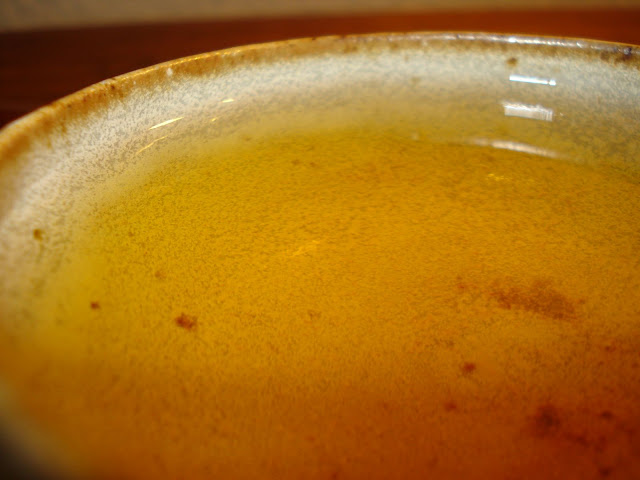This tea was made in 2009 by Tea Master Kim Jong Yeol, grown in the Hwagae Village, South Korea. Pedro sources all of Dao Teas offerings himself, directly from the Tea Masters. Pedro doesn't have a huge selection but what he has is a fairly nice selection of Korean teas that all of which are handmade using time honored, traditional techniques. Balhyocha is an oxidised ( Yellow Tea ) This should be interesting, Ive only had three Korean teas previously and all of those were green teas.
First things first, the dry leaf is a very deep, dark, roasted brown color, with the some of the leaves edges turning a rich burnt sienna color. An intense aroma of malted grain and chocolate, with the slightest touch of fruity raisin. The leaves are quite long, chunky and thick. What that tells me is that there is a lot of flavor packed in those leaves that typically results in many, many infusions. Leaves with these characteristics usually require at least one infusion just to get them to open up a little. So, the first pot is a teaser for what's to come in later infusions.
The recommended brewing method suggests using 175 degree water. O.K. I,ll give it a shot, I would have thought hotter water would be needed to pull the flavors out of these stout leaves. The aroma wafting from the pot is very nice, malted grain (cereal) chocolaty, a tad fruity. The tea brews a yellow cup with a touch of amber, judging by the color of the dry leaf I was expecting something a little more reddish, brown.
Very nice! The flavor leans very much toward cereal and chocolate, reflects it's aromas very well. No astringency at all, very slightly sweet. In some ways the Balhyocha's aroma is reminiscent of a China Congo, but then again it's in a category of it's own. Hmmm......it's a nice tea but it just isn't delivering what I would consider fully saturated flavors, just a little tame. Resorting to using hotter water and longer infusion times in an attempt to get a little more flavor out of the leaf turned out to be of no avail, the teas already fading.
Intuition is telling me I didn't coax from these leaves everything they had to offer, could this have been caused by the tea being a year old? Improper brewing? I,m gonna have to buy a bag of this so I can get a better grasp of Balhyocha's flavors and brewing requirements.
It's a great day for tea tasting, first hint of Autumn in the air, pouring rain the entire day. I,m beginning to see how Korean teas are made in such a way as to coax the best attributes of each plucking, 1st, 2nd, 3rd etc. The tea makers probably varying the various stages of tea production to maximize each pluckings potential. The Balyhocha's leaf is much larger than Ujeon, Sejak or Jungjak so it makes sense that the leaf would need partial oxidation as there would be little of the fresh green tea characteristics remaining in the leaf at this stage of it's growth.
Thanks again Matt and Pedro! I,m looking forward to trying the other samples.


No comments:
Post a Comment